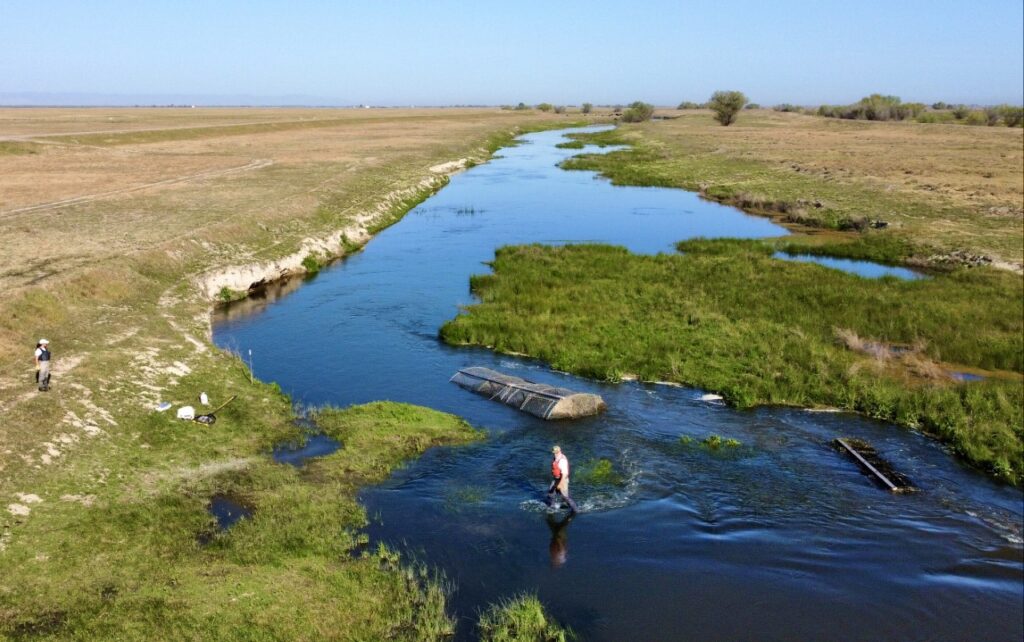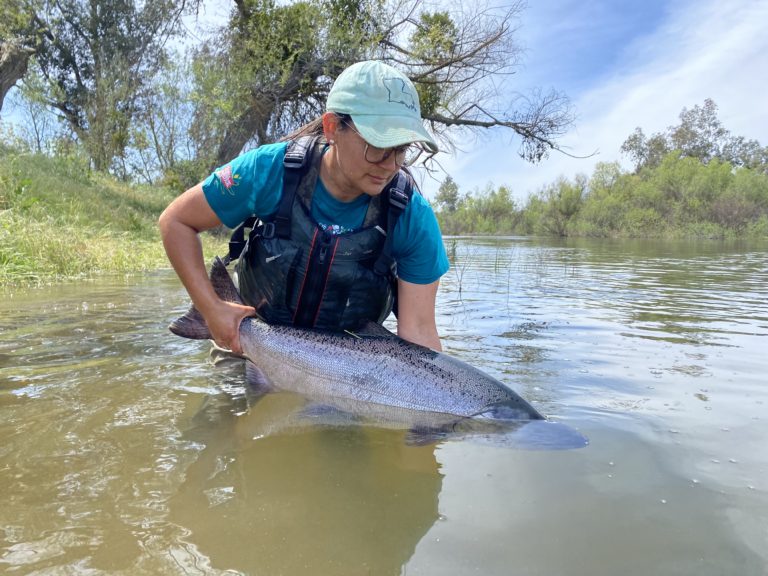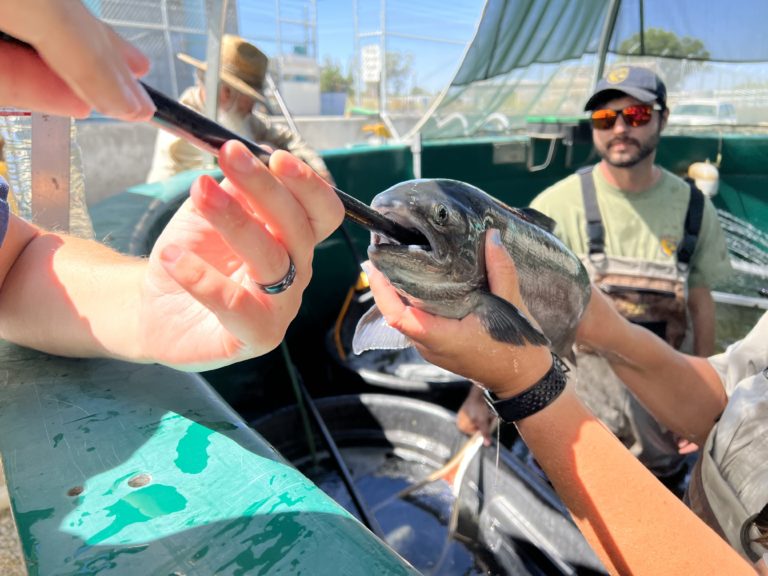
Wet Year Brings Cautious Optimism for Fish Returns on the San Joaquin River
After one of the wettest winters on record and a season of flood operations, the Program is once again releasing Restoration Flows to the river. The 56-degree flows are currently nearing 200 cubic-feet-per-second to support holding adult spring-run Chinook salmon in the system. Those big flows meant big passage opportunities for any returning spring-run.
“We hope the spring’s high flows allowed migrating adult spring-run to swim over in-river obstacles and into Reach 1 for spawning,” said Towns Burgess, the Program’s lead fish biologist.

A number of obstructions to salmon migration currently exist within the San Joaquin River Restoration Area. The largest of these, Eastside Bypass Control Structure and Mendota and Sack dams, prevent adult spring-run migration into Reach 1 in all but the wettest years. Because of these obstacles, in lower water years, field crews deploy fyke traps to capture returning salmon and trap and haul them around these obstacles in tanker trucks to Reach 1 below Friant Dam. This process gives Program biologists some indication of how many returning adults are in the system. However, this year, trap and haul operations weren’t necessary due to the high flows.
To open the river to flows and fish, the Program is completing designs for passage solutions around these structures and expects to be in construction for Sack and Mendota dam solutions by 2025. In the future, these passage projects will eliminate the need for trap and haul in all but the driest years.

This year, there is cautious optimism for a better spawn after low returns in 2022. Several fish believed to be spring-run have been spotted near Friant Dam, and the Program released 270 adult spring-run Chinook broodstock (35 females and 235 males) from the Interim Salmon Conservation and Research Facility (iSCARF) to below Friant Dam. The Program has been releasing ancillary broodstock to the river since 2016. All of the fish released have PIT and coded-wire tags and are adipose fins clipped for tracking and identification.
“We definitely have adults in the system capable of spawning,” said Pat Ferguson, the fish biologist overseeing the California Department of Fish and Wildlife, SJRRP River Unit which handled the release on August 9 and 10 just below Friant Dam.

In the meantime, Program field crews are preparing to conduct redd and carcass surveys on the river in anticipation of spawning season. Both surveys provide Program biologists with valuable data including spawning fish abundance and sex ratio, spatial distribution of redds, and indications of spawning habitat quality and quantity.
Check back on this website for updates about this year’s spawning success!
For more information about these activities or the Program, please feel free to contact Josh Newcom, SJRRP Public Affairs Specialist, at 916-208-6862 or via email at snewcom@usbr.gov.
